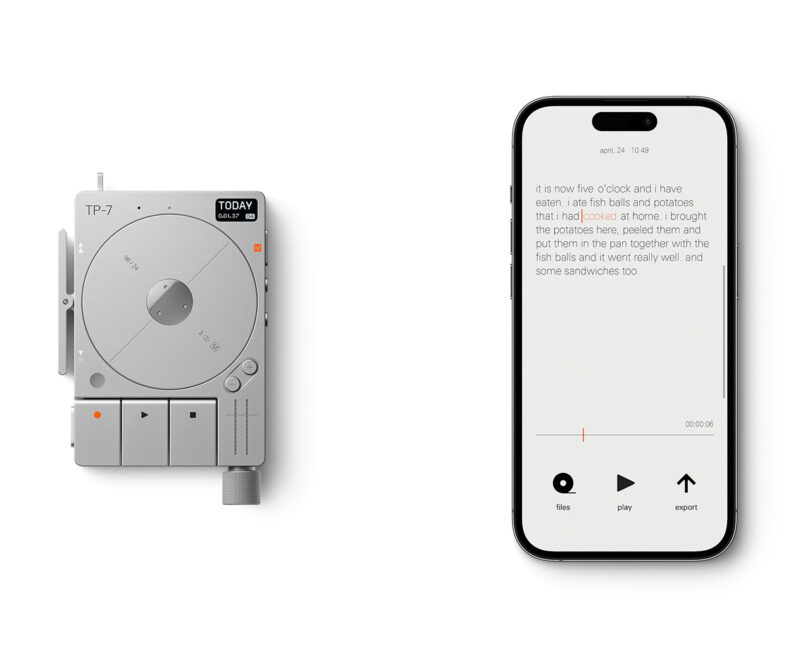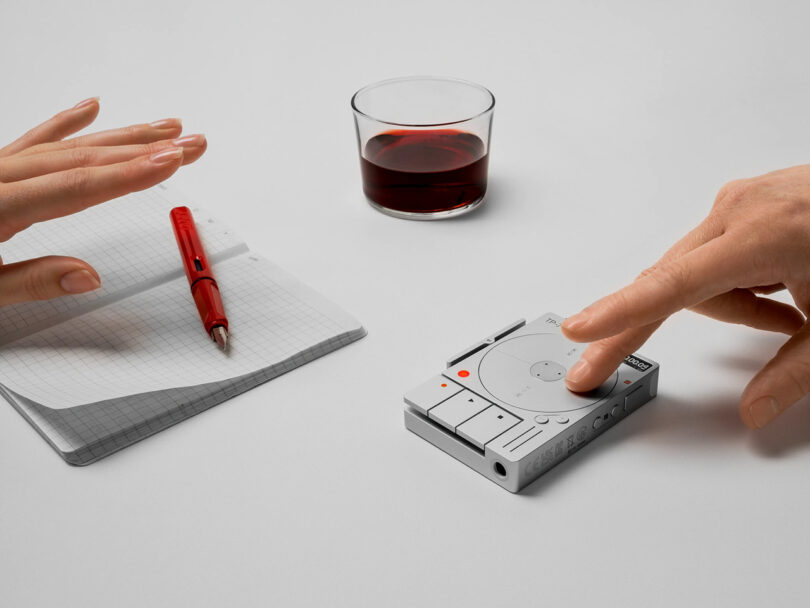
The touchscreen display is one of the greatest – and polarizing – inventions in modern times. While a display interface on a mobile device can transform into an endless array of configurations and purposes, that adaptability in utility comes at a price: losing the sheer simplicity of operating by tactile feedback. It is almost always easier to press a button or turn a dial than navigating a graphical interface – “tap to open, scroll, and press.”
This is particularly true when capturing audio, a task I often rely upon while interviewing subjects using my iPhone. I make it a habit to have the app ready ahead of recording to prevent the dreaded instance of “GAH! I wasn’t recording” every journalist runs into at one time or another. Even when operating correctly I’m perpetually checking to make sure it’s recording because of the lack of physical (and aural) indications my device is correctly recording.
The Teenage Engineering TP–7 field recorder is an interesting proposition, not so much a compromise, but a digital recording device designed to invite the fingers to intuitively utilize physical controls just like an analog tape recorder of yore: the index finger triggers fast forward, the middle finger rewinds, the thumb records a memo, and the pinky selects the mode.
Just as early computing and mobile device design veered toward skeuomorphism – the approach in making digital tools resemble their real-world counterparts – so can be said of the TP–7’s form, one mimicking the appearance and movement of a motorized tape reel to clearly communicate the device is in fact recording.
Inside the TP-7 is a brushed motor with ball bearings, and a highly sensitive hall sensor that lets you virtually grab your recording. The reel is a cool gimmick, but one that is engineered to be used in conjunction with a novel side-mounted rocker that gives the user the option to scrub, fast forward, and rewind by touch. The entire physical interface would take mere minutes, perhaps seconds, for a new user to figure out. It also comes with the perk of a scrubbing action propelling the wheel accompanied with a ’hyperspeed’ sound for amusing effect.

Kudos to Teenage Engineering for also launching the TP–7 with an accompanying app to automatically transcribe any audio interviews to text.
TP–7 features three stereo two-way jacks to be used as either inputs or outputs, for connecting external mics, headphones, studio monitors, or any other audio equipment like OP–1 field or TX–6, recording with all 6 stereo channels. The recorder is compatible with USB-C for multi-channel audio interface, MIDI, data transfer, and charging, with Bluetooth Low Energy and MFi capability for wireless connectivity. TP–7 also includes our 6.35 mm to 3.5 mm jack adapter, and up to 128 GB of internal storage (which equates to 5 minutes of ideas a day for 20 years).
The Teenage Engineering TP–7 field recorder is not designed for everyone, especially at its eye-bulging price (the very reason I haven’t rushed out to buy one myself). It is by design a purposely particular device for particular people. But for anyone who regularly relies upon recording audio for professional purposes, we wouldn’t blame you for caving into the temptation to splurge hard upon a device engineered to record interviews, capture sound or music, or to use in similar fashion as Twin Peak’s Agent Cooper in such stylish and touching fashion.



















